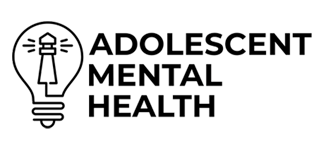How To Help Troubled Youth: Recognizing Signs, Understanding Causes, and Finding Effective Support
Early intervention can transform a teen’s life—approximately one in seven adolescents aged 10-19 worldwide experiences a mental health challenge that impacts school, family, and self-esteem. Understanding how to help troubled youth means learning to spot warning signs, uncover underlying causes, explore evidence-based treatments, guide parents through supportive strategies, and access critical resources. This article covers five essential areas:
- Common emotional and behavioral signs
- Root causes of troubled behavior
- Treatment options, including virtual programs
- Parental support techniques
- Crisis hotlines and professional resources
By weaving in specialized virtual mental health programs from Adolescent Mental Health, we ensure families find accessible, expert-led care without delay.
What Are the Common Signs of Troubled Youth?
Troubled youth display persistent changes in mood, behavior, and performance that go beyond typical adolescent ups and downs because these shifts often signal deeper emotional distress and risk. For example, a previously outgoing teen who suddenly withdraws from friends may be experiencing anxiety or depression.
How to Identify Emotional and Behavioral Warning Signs in Teens

Emotional closeness and daily routines change when a teen struggles. Look for these key indicators:
- Rapid mood swings such as irritation or overwhelming sadness
- Social withdrawal from friends, family, or activities once enjoyed
- Noticeable drop in academic performance or motivation
- Sleep disturbances, including insomnia or excessive sleeping
- Risk-taking behaviors like substance use or self-harm
These warning signs demand attention and guide families toward professional evaluation, often prompting a referral to virtual therapists.
Warning Signs of Adolescent Mental Health Challenges
Research indicates that changes in mood, behavior, and academic performance can signal underlying emotional distress in adolescents. These changes, such as social withdrawal or a decline in grades, often warrant professional evaluation to address potential mental health concerns effectively.
This research supports the article’s emphasis on recognizing early warning signs of troubled behavior in youth.
What Are the Differences Between Normal Teen Behavior and Troubled Behavior?
Understanding typical adolescence helps distinguish healthy growth from red flags.
| Typical Teen Response | Troubled Youth Indicator | Impact |
|---|---|---|
| Mood swings tied to social events | Persistent irritability without cause | Daily functioning and relationships suffer |
| Occasional academic dips | Chronic decline in grades and interest | Long-term educational setbacks |
| Testing boundaries safely | Defiant or aggressive actions at home | Family stress and conflict escalate |
Normal teen changes reflect growth; troubled behavior disrupts core routines and relationships, signaling the need for intervention.
When Should Parents Seek Professional Help for Their Troubled Teen?
Parents should connect with experts at the first sign of escalating distress or danger. Seek help if your teen:
- Expresses persistent hopelessness or suicidal thoughts.
- Engages in self-harm or extreme risk-taking.
- Withdraws so completely that basic self-care declines.
Early professional involvement, including virtual mental health programs, promotes safer, more effective recovery.
What Causes Troubled Youth Behavior and Mental Health Challenges?
Troubled behavior often stems from complex interactions of biology, experience, and environment, making it critical to address each factor for lasting support.
How Do Brain Development and Hormonal Changes Affect Teen Behavior?
Rapid maturation of the prefrontal cortex and fluctuating hormones can amplify emotional responses and impulsivity. These neurological shifts explain why teens may struggle with decision-making or self-regulation until brain regions fully mature, typically into the mid-20s.
What Role Do Trauma, Peer Pressure, and Environment Play in Troubled Youth?
Several external factors contribute significantly:
- Childhood trauma disrupts emotional regulation and trust
- Peer pressure fosters risky behaviors and identity stress
- Unstable home environments increase anxiety and behavioral issues
Addressing these root causes through trauma-informed care and virtual counseling supports holistic healing.
What Are the Best Treatment Options for Troubled Youth?
Effective treatment combines evidence-based therapies with flexible delivery methods, ensuring teens engage consistently and safely.
Which Types of Therapy Are Effective for Troubled Teens?
Common modalities include:
- Cognitive Behavioral Therapy (CBT): Restructures negative thoughts to improve mood and coping
- Dialectical Behavior Therapy (DBT): Teaches emotional regulation and distress tolerance
- Family Therapy: Strengthens communication and resolves systemic issues
These therapies form the backbone of both in-person and virtual programs.
How Do Virtual Mental Health Programs Support Troubled Youth?

Virtual programs expand access and fit into busy schedules, offering benefits such as:
| Program Feature | Benefit |
|---|---|
| Online individual therapy | Comfort of home and flexible hours |
| Virtual group sessions | Peer support and shared skills |
| Digital progress tracking | Immediate feedback and goal setting |
Effectiveness of Virtual Mental Health Programs
Studies have shown that virtual mental health programs can be as effective as in-person therapy for adolescents, offering increased accessibility and flexibility. These programs often incorporate evidence-based therapies like Cognitive Behavioral Therapy (CBT) and Dialectical Behavior Therapy (DBT) to address various mental health challenges.
This citation supports the article’s discussion of virtual mental health programs as a viable treatment option for troubled youth.
These remote options mirror in-person care standards while reducing barriers to consistent treatment.
What Are the Differences Between Residential and Outpatient Treatment?
| Setting | Scope of Care | Key Advantage |
|---|---|---|
| Residential | 24/7 therapeutic environment | Intensive support and structure |
| Outpatient | Scheduled sessions, home living | Maintains school and family routines |
Choosing the right level of care depends on severity, risk factors, and family circumstances.
How Can Parents Support Their Troubled Teen Effectively?
Active parental involvement boosts treatment outcomes and strengthens family bonds throughout recovery.
What Are Effective Communication and Parenting Strategies for Troubled Teens?
Parents can:
- Practice active listening to validate emotions
- Set clear, consistent boundaries to foster safety
- Use calm, non-judgmental language when conflicts arise
These strategies build trust and encourage teens to engage in therapy.
How Can Parents Prepare and Support Teens in Virtual Therapy Settings?
To maximize virtual sessions, parents should:
- Ensure a private, distraction-free space.
- Encourage punctual attendance and participation.
- Discuss session learnings and practice skills at home.
Parental support bridges the gap between sessions and everyday life.
Why Is Self-Care Important for Parents of Troubled Youth?
Caring for a struggling teen can be emotionally taxing, so parents benefit from:
- Regular stress-reduction activities such as exercise or mindfulness
- Support networks including peers or professional counseling
- Balanced routines that protect their own well-being
Parental resilience sustains long-term family recovery and models healthy coping.
Where Can Families Find Resources and Crisis Support for Troubled Youth?
Immediate access to help and qualified professionals can save lives and guide families through critical moments.
What Emergency Mental Health Hotlines Are Available for Teens and Families?
Families can call or text:
- 988 Suicide & Crisis Lifeline for 24/7 support in the United States
- Crisis Text Line (Text “HOME” to 741741) for confidential texting help in the United States
These hotlines connect youth to trained counselors at any hour.

How to Find Qualified Mental Health Professionals for Troubled Youth?
When seeking therapists or psychiatrists, parents should:
- Verify state licensure and adolescent specialization
- Review provider profiles and client testimonials
- Ask about experience with virtual therapy platforms
Selecting credentialed professionals ensures safe, effective care.
Which Youth Mental Health Organizations Provide Support and Information?
Trusted non-profits include:
- NAMI (National Alliance on Mental Illness)
- The Trevor Project for LGBTQ+ youth
These organizations offer education, peer support, and advocacy that complement professional treatment.
Families seeking a structured, expert-led path to healing can explore virtual mental health programs at AdolescentMentalHealth.com. Our adolescent-focused, evidence-based services deliver CBT, DBT, family therapy, and crisis support online—combining accessibility with specialized care. Early connection with qualified providers enhances recovery and helps troubled youth build resilience for a brighter future.









